Copyright 2020 - 2021 irantour.tours all right reserved
Designed by Behsazanhost
From Gastronomy Tourism to Creative and Sustainable Tourism of Gastronomy
From Gastronomy Tourism to Creative and Sustainable Tourism of Gastronomy
30 Tir Street Food in Tehran
By: Mehrnoosh Bastenegar
Tourism and gastronomy together are as old as Food tourism and gastronomy. Nowadays the systems of these twins are so developed that they can secure social and economic prosperity and well-being of societies and control environmental hazards by focusing on creativity, local and indigenous art, and culture. Such sustainable development depends on innovation and the adoption of innovative approaches to solving civil problems. Although street food seems to be only a place for slow and strolling tourism at first glance, if the managers and urban planners can support and reinforce the creative and related industries in the creative tourist paradigm, one can hope that the larger local community will find better livability and better prosperity.
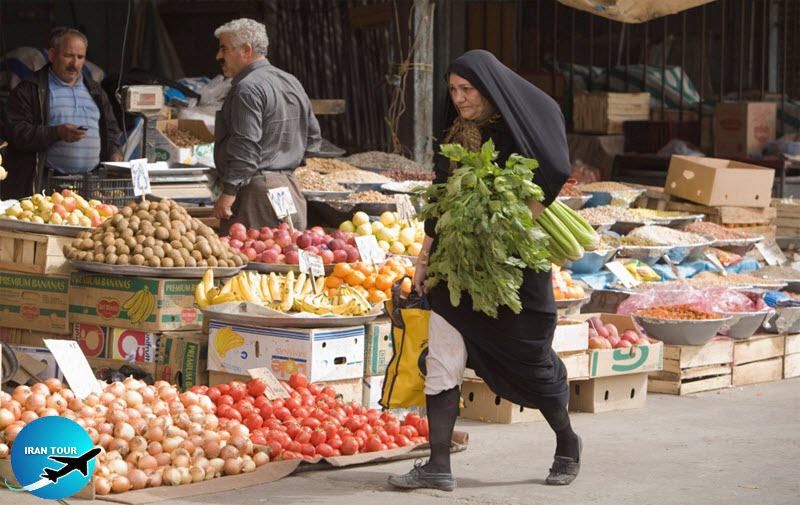 |
In this study, for answering the main question, “what kind of activities should be done on the sidewalks of 30 Tir street in Tehran to be sustainable as creative gastronomy tourism?”, a qualitative research method is used and by conducting library studies, observing, interviewing and holding the expert panel, performing 77 activities is represented as a response. These activities are in fact the expected services of the business ecosystem based on creative gastronomy tourism, only 7 of them are currently running on 30 Tir street in Tehran, and the rest are the road map development of this pedestrian street, which are considered as the main findings of this research. Among the priorities of this roadmap, being in harmony with the historical and cultural textures of the neighborhood and relation with it was associated with the consensus of the expert panels.
The concept of the experience economy (Pine & Gilmore, 1998; Schulze, 2005) has accelerated the emergence of new attractions and cultural events in cities (Ashworth & page, 2011). Symbolic concepts and meanings have determined the economic value of goods and resources such as culinary arts, music, clothing, and intellectual and subcultural traditions that have been able to deliver unique and competitive features to one place. Since there is no ending for creativity, it can be said that culture and creativity are new solutions to the sustainable development of societies.
In developed countries, tourism has a special place such as a cognitive system and a meta-system of economic and social development. In Iran, tourism can also be a model of endogenous development without relying on oil. The creative tourism paradigm invites travelers to engage in empirical activities and deep relations with the real life of the target community. This sustainable form of tourism distinguishes the destinations (Richards & Wilson, 2006) and is an effective factor in the restructuring, recreation, and development of destinations (Yozcu & Icoz, 2010). Today, creative and educated tourists are seeking to make sense of their lives and gain more knowledge and recognize their personal experiences (UNESCO, 2006). They are no longer just passive leisure consumers and want to enrich their leisure time with creative experiences (Singh, 2004). They take part in creative activities at a destination, provide opportunities to learn new skills, and build close ties with local people and their cultural heritage (Richards & Wilson, 2006). On the other hand, many small creative firms are looking for new markets for development. Especially as the popularity of creative things like music, dance, cooking, and so on is growing. Therefore, the capacity of industries, cities, and creative people can accelerate slow tourism. Understanding the economic capacity of culture-based creativity is a development tool and a potential solution to many economic, social, and environmental issues (Korez-Vide, 2013). The main reason for emphasizing creativity in tourism is to promote a special atmosphere for locals and visitors to breathe in the same place and enjoy the attraction. Diversity in the socio-cultural textures is one of the key basements of creative processes and activities that our country enjoys it. It should be noted that “slow philosophy”, which is a highspeed response in industrial societies, can be the driving force behind the development process of the tourism channel. This philosophy states that “slow-footedness” in life leads to a density of pleasure. Slow life is always more meaningful, ethical, and aesthetically more pleasing. This concept has been particularly demonstrated in “slow foods”. This approach has led to the development of slow tourism destinations to conquer market segments that are trying to create soft experiences related to local cultural heritage (Fernandes, 2011). Slow tourism also means a sort of release and drowning in the destination; a kind of sauntering and strolling in the positive sense that the tourist has the opportunity to meet local people, foods, and customs and enjoy them. Street foods are urban attractions that have the potential to attract creative tourists, postmodern strollers, and those who want to experience slow food. In this study, in order to improve and develop the 30 Tir street food, which is a concern of the urban management of the area, we attempted to provide an answer to the following main and explorative questions.
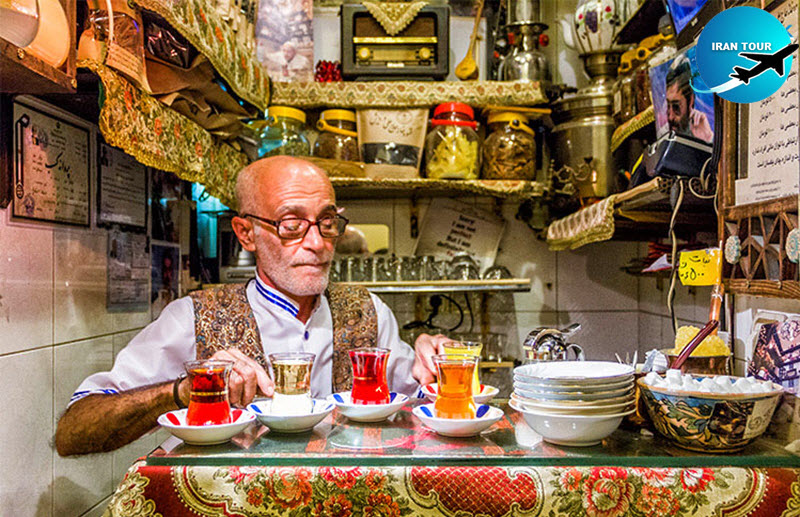 |
The main research question The main question of this research is, “what kind of activities should be carried out in the sidewalks of 30 Tir street in Tehran in order to be considered sustainable as a creative gastronomy tourist attraction?”
Research method This is qualitative research and is based on the post-positivism paradigm. It is a study in which the primary task of social science is to understand and interpret matters rather than scientific predictability and the discovery of general rules. In this study, the observer and the observed are intertwined and the researcher cannot study the facts independently of the values (Zargar, 2007). In order to find the answer to the research question, the operation process has been carried out according to Fig.1. As can be seen in Fig. 1, to find the answer to the research question, the researcher first discusses 30 Tir Street in Tehran (Street Food) in a conceptual model of creative tourism to determine whether this food street can be studied in concept and the background of creative tourism or not.
 |
Then the current status of 30 Tir Street is examined as a food tourist attraction. It should be noted that the author has designed the conceptual model of creative tourism in his earlier published research work (Bastenegar, Hasani & Khakzae be froui, 2017) and an exploratory study also developed the services of the business ecosystem with the creative gastronomy tourism platform through thematic analysis and validation from the expert (Bastenegar, 2018). Thus, this study based on the services of a creative food tourism ecosystem in Tehran aimed to provide for 30 Tir Street optimal solutions as a creative and sustainable tourist attraction of gastronomy. In the present study, data collection was performed using the following two methods: Direct observation: The presence of the researcher on the sidewalk of 30 Tir food Street in Tehran and observing the existing space and conditions and interaction with the sellers and buyers of the offered food. Interview: open and in-depth interviews with experts and holding expert panels.
Users of research results The main beneficiaries of this research are trustees and policymakers of the Tehran municipality. However, the creative industries and tourists can also recognize their roles and optimize interactions and collaborations with other members by enhancing their knowledge about the creative tourism ecosystem services of gastronomy. Tourism and food Today, gastronomy as the focus of tourist experience play an important role in enhancing competition between destinations. Catering and food consumption has become a global industry that tourism is an important part of it and like other services and experiences that consumers enjoy in postmodern societies, a distinct system of production and distribution has emerged that can be introduced as one of the cultural and creative industries (Hjalager & Richards, 2003). There is a strong relationship between food and identity, and any attempt to change food habits is such as an offense to national and individual identities. There is also a natural relationship between the land of a region and the foods there so that this geographical diversity has made the culinary traditions different (Hughes, 1995). This link between the place and gastronomy is itself a tourist attraction so that some in their classifications of tourist attractions have introduced gastronomy ways as a cultural product of tourism (Munsters, 1996). Tourists often like to try local cuisine, which increases the demand for food production and hospitability services. They also often seek different ways of preparing and delivering food which stimulates innovation in production and distribution. Furthermore, the development of an attractive food tourism market can also help to increase the quality of life while attracting new visitors, preserving residents, and ultimately boosting the image of destination as the economy grows. Food not only shapes tourism structure but also plays an important role as "souvenirs" (Richards, 2012). Therefore, finding ways to add value to food experiences to make it more memorable is essential.
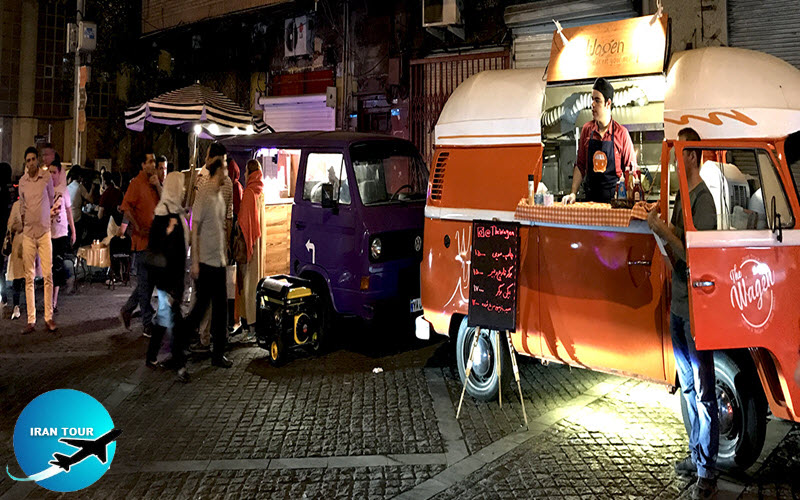 |
-Conceptual model of creative tourism and food street
Creative tourism with the slogan of "fewer museums, more squares" goes beyond just visiting historical monuments and natural landscapes; it focuses on experimental activities, deeper interaction with local community life, and participatory observation in which all the five senses of the tourist are involved in creating his unique experience. Raymond defined creative tourism as a sustainable form of tourism and showed that holding interactive art and cultural workshops in small groups allow visitors to discover their creativity in meeting local people (Raymond, 2007). Creative tourism is not as dependent on the location as cultural tourism since creative tourism employs resources which in their main nature are a kind of process (such as local singing, crafts, painting, cooking, festivals, etc.). As a result, they are more sustainable than cultural tourism which is based on the use of artificial environments. Therefore, according to the researchers, creative tourism plays an important part in the development of the target community. Creative tourism is a way to increase social capital (Richards & Marques, 2012). Since producers and consumers can switch their roles and form relationships that have evolved from the seller-buyer relationship to a master-student one. Although the definitions of scholars in the field of creative tourism may focus on different points, they have the commonalities of “active participation”, “authentic experiences”, “development of creativity capacity”, and “skill development”. It can be said that in the tourism paradigm, “active consumption”, “intangible heritage and culture”, “development of visitor’s self-confidence and self-awareness” are the keywords. It can be expected that the creative tourist learns about arts and crafts, designing, cooking, health, and treatment, language, spirituality, nature, sports, games and traditional entertainments, music, dance, movies, and other creative media. Since creative tourism can be placed in a range of supply-oriented to demand-oriented, as well as a continuity from target-oriented to activity-oriented, by combining the two aforementioned areas, the researcher has designed a conceptual model for creative tourism. In this quadruple model, each room is presented with the titles of "creative tourism ecosystem", creative landscape", "creative industries" and "creative class", which can represent different aspects of creative tourism. This conceptual model is presented in Fig. 2.
 |
In the "creative tourism ecosystem" which is shaped by the convergence of demand-oriented and supply-oriented, the interactions of formal and informal networks are at the highest point, and the local community plays a critical role in the realization of the creative tourism process. Cultural and creative industries and clusters, infrastructures, structures, facilities, and destination resources are heavily involved in this creative tourism area. In this case, the place itself is a part of a creative experience and a sign of its authenticity. In the second quarter, the emphasis is on creative industries that allow creative activities for tourists. In this case, since the performed activity is not presented in a particular region and culture, the experience authenticity is somewhat diminished. Creative industries are often small businesses; they are the coincidence of art, business, and technology, and include tangible products and intangible spiritual services with creative content, economic value, and marketability. The creative class quarter shows creative tourists whose skills and interactions are emphasized. The fourth quarter, the creative landscape, is an original nature or artificial destination that has aesthetic value for the creative tourist and is followed by sense-making and identity formation. The creative landscape can become a place for creative narratives (Bastenegar et al., 2017). According to Figure 2, it seems that street food can be promoted as creative tourism which is defined in the second quarter of the mode. In other words, Food Street is more based on creative supply and activities. As stated in the designed model, the focus of this part (Fig. 2) is on the creative industries and their development will lead to the development of creative tourism.
Kinds of creativity in the city Different scholars have expressed different opinions on how cities are created and how creativity is expressed. Some scholars have focused on "learning" and have stated that if the urban space will lead to more learning, it is more creative. Some have focused on the concept of "intelligence" and its dimensions, i.e. verbal, numerical, digital, social, visual, spatial, natural, physical intelligence, and so on. For example, natural intelligence by creating spaces for people to interact more with the nature in the city, physical intelligence by creating sports spaces in the city, mathematical intelligence using, for example, multiplication tables on the sidewalks, collective intelligence with a field to gather people in the city, and visual intelligence can be created due to the aesthetic elements of urban space. Other scholars have a process-oriented view of ensuring that all citizens participate in the design process. They believe that creativity is in the context of citizens' behavior, although the product does not appear to be creative. Some have emphasized the existing "scientific, cultural and artistic resources" in the city. It seems that food street is stimulated and reinforced by gathering people around the gastronomy industries and related creative industries. However, enhancing visual intelligence and learning cannot be denied.
 |
Creative and sustainable tourism on the urban food street In previous research, the services of a business ecosystem with the platform of creative gastronomy tourism, consisted of 138 activities, presented in a twenty-five classification (Bastenegar, 2018, Hasani & Bastenegar, 2017). In the present study, this list with 138 lines is the base of research and the researcher has finally obtained the following list of 77 lines by observing and interviewing the experts and finding their agreement or disagreement with regard to each line. In other words, 77 activities out of 138 ecosystem activities of creative gastronomy tourism can emerge and run on an urban sidewalk. In the second phase, by observing, presenting, and interacting with tourists of the sidewalk and their answers, the researcher concluded that only seven activities are currently running in this food street (the dark rows in Table 1). Thus, other seventy activities that are shown in Table 1 in light color are in fact the road map of 30 Tir Food Street development, and the urban management must incorporate the extension of these services into their plans.
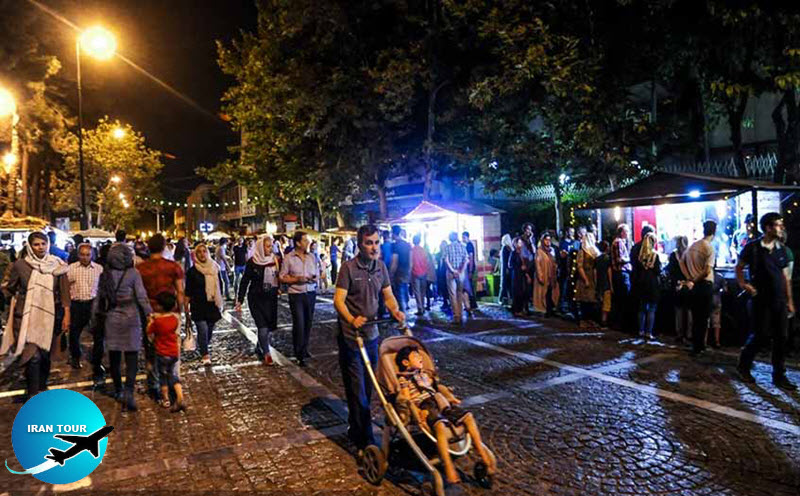 |
Discussion and conclusion
Gradually, tourists show more tendency to learn and increase their cultural capital to create new food experiences, and gastronomy tourism is an important aspect of emerging creative tourism paradigm in which tourists can enjoy food, cooking, food properties, customs, and other creative processes associated with it. This kind of tourism plays an important role in the creative revitalization of cities and neighborhoods. Creating such a mixed atmosphere of confrontation between tourists and local people requires formal and informal networks, in addition to physical infrastructures. This study aimed to develop creative and sustainable tourism in Tehran's 30 Tir food street. is considered as an achievement of this research based on observations and interviews with experts. According to the main question of this research, "what kind of activities should be carried out on Tehran's 30 Tir sidewalk to be sustainable as creative gastronomy tourism attraction?", according to Table, the following can be considered as the main priorities. These priorities are discussed and summarized by the researcher in the Expert Panel at the Opinion Research Institute in collaboration with the author. Providing legal, lawful, and financial support for the creative industries and NGOs in the field of food and related industries; since the diversity of species in an ecosystem guarantees its survival. Increasing job opportunities in the field of gastronomy and related industries is also a serious activity that planners and executives of 30 Tir Food Street pay attention to it.
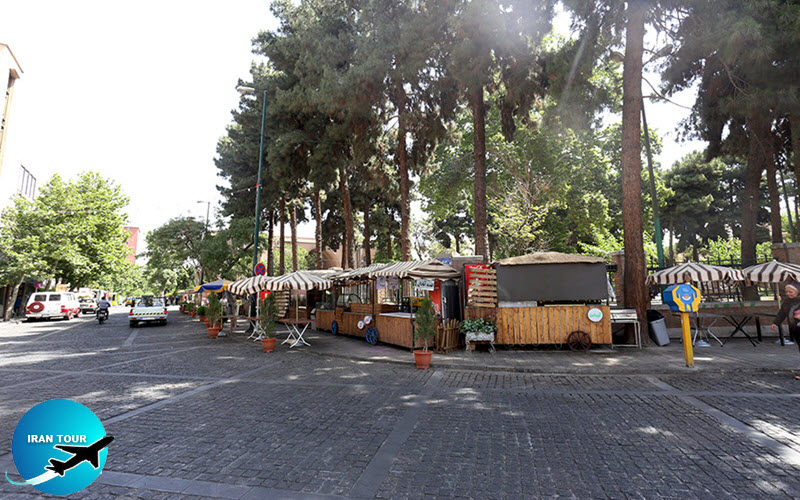 |
Recognizing all stakeholders of the sidewalk and trying to establish a win-win relationship with them; because if some businesses and local community are not satisfied with the created space for any reason, the continuity and sustainability of the pavement will be accompanied with more risks. 30 Tir Food Street should be associated with the neighborhood's cultural and historical heritage and museums and should be in harmony with them. 30 Tir Street is also called “Religions Street” because mosques, synagogue, and church are located next to each other. Furthermore, there are many cultural, historical, and museum buildings, including the National Museum of Iran or the Museum of Islamic Era. The Complex of Mashq Square and Officers' Cub and Pearl Cannon cannot be overlooked. Abgineh Museum, the old monument of the Prophet Ebrahim Mosque, a historical pavement for the period of Pahlavi at the intersection of Jomhouri Street and 30 Tir Street, the Adrian Fire Temple with a fire dating back to several thousand years ago, Atabak Garden (where Sattarkhan and Baqirkhan were hiding there), the Armenian Museum and so on, all these places show the historical and cultural texture of this street and neighborhood that if the food street cannot be in proximity, it will experience unstable conditions. Developing creative ecosystems are successful if the bottom-up approach is replaced by top-down approaches of the city development. It means that strategies will lead to sustainable development that will be able to empower self-confidence and social cohesion and connect the local community, from indigenous minorities to academic elites and scholars. Creating social equity to the extent of municipal management of the area and increasing social capital through transparency and attraction of local community participation, elimination of social discrimination and cultural and legal tolerance can contribute to a sustainable food street based on eco-creativity. In this respect, creating the space and infrastructure for talking, idea generation, and converting an idea to a product, which has the social openness and openness of dialogue with all its materials, should also be considered.
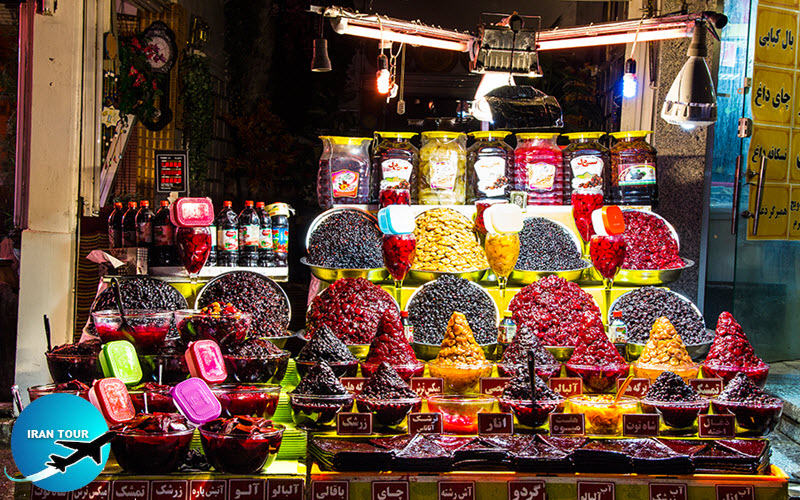 |
Contrary to the past that cities were formed alongside industrial centers, today culture is the city's main asset, and this is the reason for the preference of humans over cars and pedestrians over riders in developed cities. The material of this paradigm shift is attention to pedestrian life in cities and strolling and sauntering in cities and attention tonight lightning. Furthermore, special attention is paid to the population and the hidden part of society, i.e. physically handicapped and motor impairment, which must be involved in the development of the food sidewalk. Development of green spaces and greenways, attention to environmental health and sustainability, the implementing of policies and systems of collecting and recycling waste and sewage, the need to serve fresh and healthy organic foods in organic containers and nature patron and also in a long-term view, making Eco Park alongside the gastronomy pavement is also one of the promising areas of sustainable development. Smart city, smart tourism, smart or digital sidewalks are also keywords that are gradually becoming normalized and it is not acceptable to put it aside. Shorter-term offers may include free Internet access or charger installation on the sidewalk. Furthermore, applications of reserving food on the sidewalk and other related services can also increase its attraction. Organizing food festivals and related events, as well as experience-based training, especially for children and adolescents, and in this regard, the development of a street university or a tasting school can be effective in promoting the quality of a food pedestrian. By executing these priorities, managers and policymakers of 30 Tir Street Food in Tehran will find the way for the development and implementation of the seventy articles of Table1. As the researchers have pointed out, it is only having comprehensive strategies that make the creative city successful and invincible (Sasaki, 2010). Creativity plays an important role in making competition among places, destinations, and tourism, although the primary goal is not performing different projects of creative development, it should be one of its major achievements (Florida, 2014). An achievement in positive feedback contributes to development since tourism is a development and an extension of daily life.
- Details
- Category: IRAN Blog



















